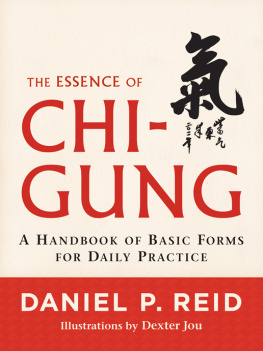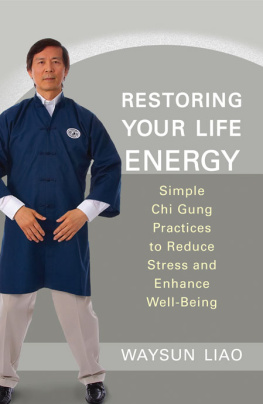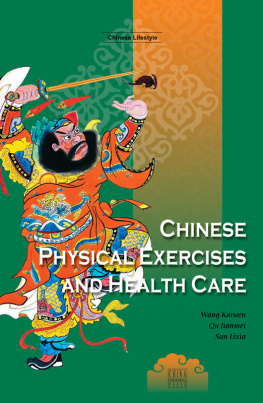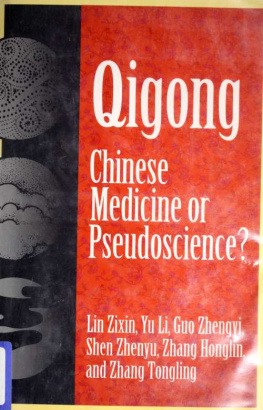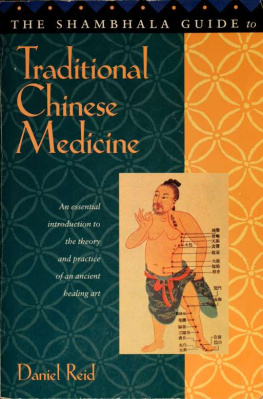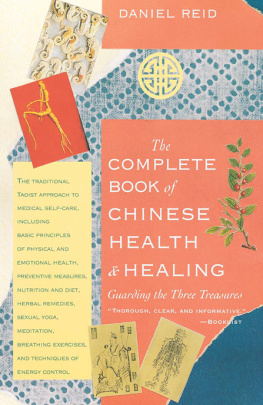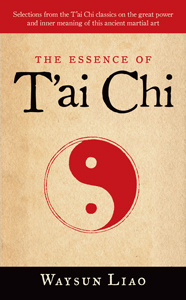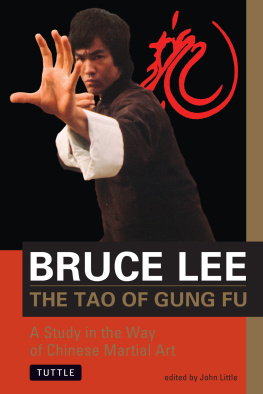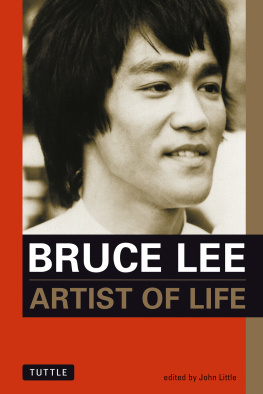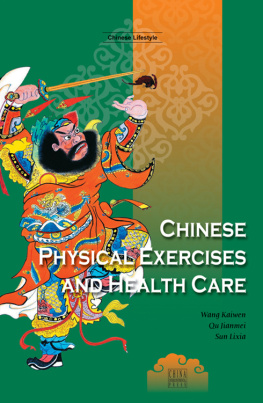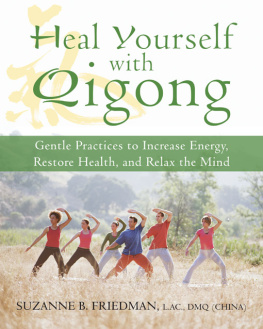ABOUT THE BOOK
The view in Chinese medicine is that good health is maintained by circulating and increasing "chi," the vital life energy that we are all born with. In chi-gung practice, slow, rhythmic breathing is synchronized with body movements, which is beneficial to both the nervous and immune systems, and to overall health.
This staightforward, easy-to-use book lays out a simple, basic chi-gung regimen for daily practice. Written by Daniel Reid, a well-known authority on the Chinese health arts of chi-gung, tai chi, acupuncture, and Chinese herbal medicine, this handbook includes warm-up exercises, movement forms, and meditations to be done daily to promote overall health and increase vitality.
This manual includes over fifty step-by-step illustrations with detailed descriptions.
DANIEL REID is a leading Western authority on traditional Chinese medicine and Taoist healing practices and has studied and practiced Chinese medicine for over twenty years. He is the author of TheComplete Book of Chinese Health and Healing (Shambhala, 1994).
Sign up to learn more about our books and receive special offers from Shambhala Publications.

Or visit us online to sign up at shambhala.com/eshambhala.
THE
ESSENCE OF CHI-GUNG
A Handbook of Basic Forms for Daily Practice
DANIEL REID
Foreword by Master Wu
Illustrations by Dexter Jou

SHAMBHALA
Boston & London
2012
Shambhala Publications, Inc.
Horticultural Hall
300 Massachusetts Avenue
Boston, Massachusetts 02115
www.shambhala.com
2012 by Daniel Reid
Cover art: Chinese character qi. Shutterstock Images.
Designed by Daniel Urban-Brown
All rights reserved. No part of this book may be reproduced in any form or by any means, electronic or mechanical, including photocopying, recording, or by any information storage and retrieval system, without permission in writing from the publisher.
Library of Congress Cataloging-in-Publication Data
Reid, Daniel P., 1948
The essence of chi-gung: a handbook of basic forms for daily practice / Daniel P. Reid; foreword by Master Wu; illustrations by Dexter Jou.
p. cm.
Includes bibliographical references and index.
eISBN 978-0-8348-2796-7
ISBN 978-1-59030-962-9 (pbk.)
1. Qi gong. 2. Exercise therapy. 3. Body movement. I. Title.
RA781.8.R44 2012
613.71489dc23
2011042586
This book is dedicated to Master Hung Yi-Hsiang and to Huang Hsi-Yi, Howard Brewer, Eric Luo, and Master Wu Zhong-Xian, each of whomin his own way and timehas kept me moving on a lifelong path of daily chi-gung practice, without which Id be long gone.
CONTENTS
The Great Dao Is Simple
Throughout the twenty-plus years that I have been teaching chi-gung, it is quite common for people to ask me what kind of chi-gung form will be most suitable for them. I always advise that any traditional style form of chi-gung (that is, one with deep cultural roots and a rich history spanning at least hundreds of years) that is practiced with consistency and dedication will bring great benefits. Authenticity is one of the most important standards for chi-gung practitioners to be aware of when choosing a chi-gung form.
In general, an authentic chi-gung movement or form features the qualities of simplicity and depth. By simplicity, I mean that the chi-gung movements are easy to follow. With respect to depth, even the simple movements of an authentic form can continuously yield positive results (on physical, emotional and spiritual levels) through daily practice. Even a lifetime pursuit of the same simple movements will lead to fresh discoveries that deepen your understanding of chi-gung, yourself, and the Great Dao.
In The Essence of Chi-Gung, Daniel Reid delivers us some authentic, traditional chi-gung forms. These elegant forms are so full of history and deep philosophical meaning that you could easily choose just one of them to follow every day and experience transformation in many areas of your life. As with high-quality tea, you will grow to enjoy your daily ritual once you learn to properly savor it. I hope you will savor these forms as you would a cup of the finest tea.
Harmonious Qi,
Zhongxian Wu
Vernal equinox, 2011
Orchid Grass Cottage, in the foothills of Blue Ridge Mountains
Friends and readers often ask me what I regard the single most important thing I do for health and longevity. Theyve read my books, and they know that I practice in life everything that I preach in writing, but still they want to know what I feel is the crane among chickens in my daily life, the one thing among the many that lays the foundation for everything else.
Everyone who asks me that question always gets the same answer, immediately and unequivocally: Daily chi-gung practice!
This handbook is designed to serve readers as a manual for the daily home practice of the basic chi-gung forms introduced in my previous book, A Complete Guide to Chi-Gung. All of the forms presented here are drawn from the same system and lineage of chi-gung that I learned from Chinese teachers and friends during my sixteen-year sojourn in Taiwan. Daily practice of these simple but precisely designed forms does more to protect health, prolong life, and forge a strong foundation for more advanced work than anything else I have ever done.
Readers of my previous book as well as newcomers who wish to adopt this system of chi-gung for their own daily practice may use this handbook as a beginning course in the basic forms and overall style of this ancient Chinese system of self-cultivation. My main teacher in Taiwan, Master Hung Yi-Hsiang, received this system from his teachers, some of whom were grandmaster lineage holders from northern China who had come to Taiwan with the nationalist exodus from the mainland sixty years before. These forms may also be used as foundational practice by adepts of other styles of chi-gung and martial arts, and the stretching and loosening maneuvers may be adapted to warm up the body, limber the joints, and stimulate circulation of blood and energy prior to jogging, surfing, rock climbing, tennis, field sports, and any other athletic activity.
I havent missed a day of practice since the day I started chi-gung while living in Taiwan in 1976, and thats the real key to success in chi-gungdoing it every day, even if only in abbreviated form. Fortunately, daily chi-gung practice makes you feel so good, and its health benefits manifest so quickly, that doing it soon becomes a daily pleasure.
DANIEL REID
Byron Bay, Australia
April 23, 2011, Year of the Golden Rabbit
Chi-gung, which means energy work and breathing skill, is the fastest and most effective way to bring the Three Treasures (san bao) of body, breath, and mind into a stable state of energetic balance and functional harmony. It involves synchronizing rhythmic movements of the body precisely with the inflow and outflow of the breath, under the calm guidance of an alert mind that is fully present in the moment. Chi-gungespecially when practiced dailyshields the body from a wide range of acute ailments and degenerative conditions, deflects and transforms the increasingly invasive forms of hazardous radiation and abnormal electromagnetic energy fields in todays environment, and tunes up the whole system by tapping into the primordial source of all energy and harnessing the power of the universe to the chariot of human health and longevity.
The great chi-gung master of Taiwan, Master Hung Yi-hsiang, often told his students, You can live sixty days without eating food and two weeks without drinking water, but youll live only a few minutes without breathing air. Yet despite this basic and indisputable fact of life, most people today who take measures to protect their health and prolong their lives focus their attention entirely on diet and nutrition. Some also try to improve the quality of their drinking water, but few pay any attention to the way they breathe and move their bodies, which are far more fundamental to life than food or water. Chi-gung is the fastest, most effective, and most convenient way to correct this widespread deficiency in human health and healing.
Next page
